Francisco José de Goya y Lucientes
51 / 141
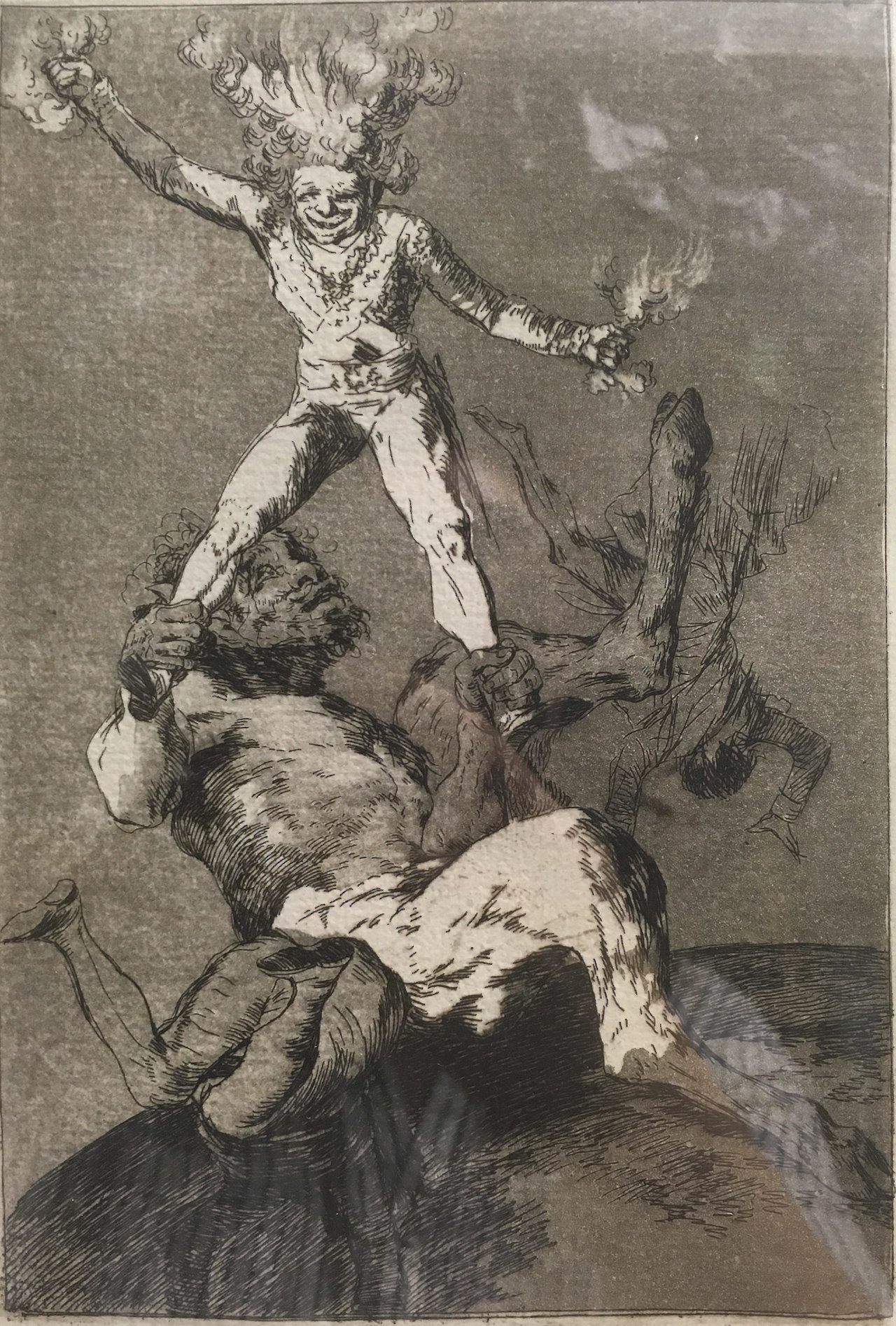
Los Caprichos, Rise and Fall (Subir y Bajar)
by Francisco José de Goya y Lucientes, circa 1797–1798
- Medium
- Etching, aquatint, drypoint, and burin
- Dimensions
- Frame: 19 in x 14 7/8 in (48.26 cm x 37.7825 cm); Image: 7 in x 5 in (17.78 x 12.7 cm)
- Location
- NSU Art Museum Fort Lauderdale
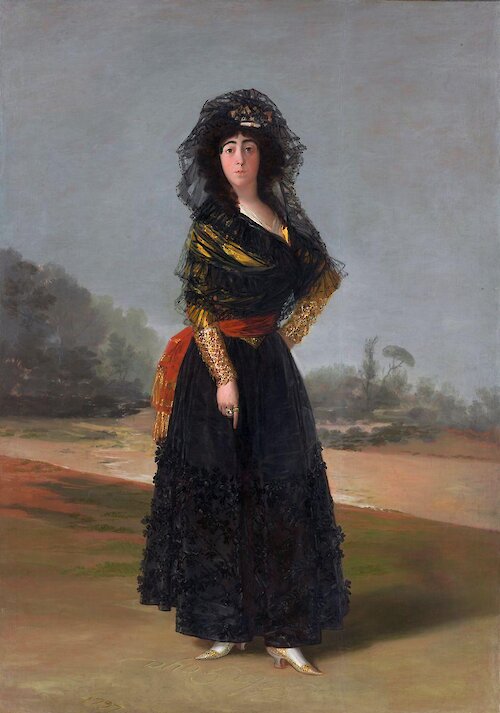
The Duchess of Alba
by Francisco José de Goya y Lucientes, 1797
- Medium
- Oil on canvas
- Dimensions
- 210.3 x 149.3 cm (82 13/16 x 58 3/4 in.)
- Credits
- Presented to the Hispanic Society by Archer M. Huntington, 1907. Hispanic Society of America. All rights reserved
- Location
- Hispanic Society Museum and Library
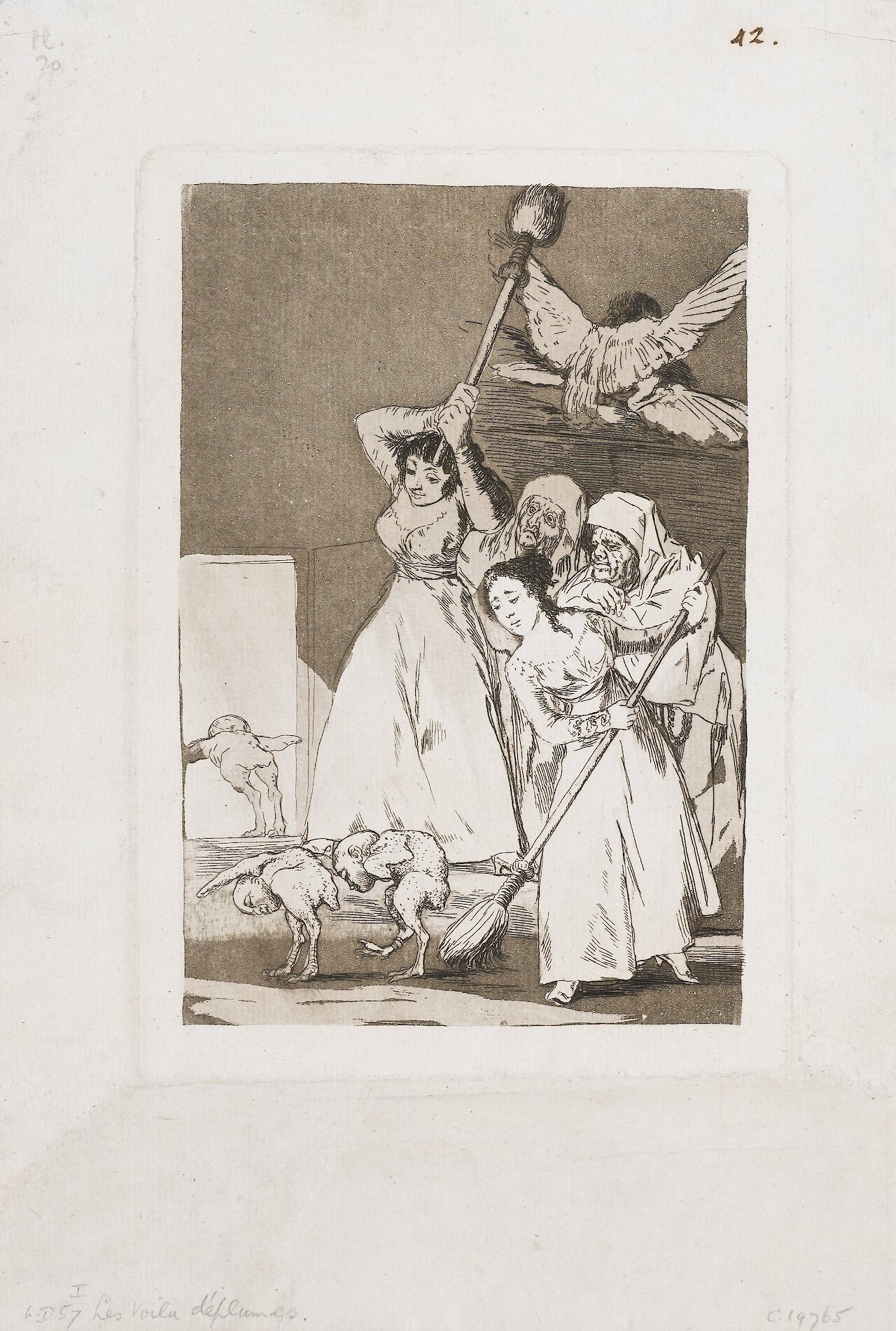
There They Go Plucked (i.e. Fleeced) (Ya van desplumados) from Los Caprichos
by Francisco José de Goya y Lucientes, circa 1798
- Medium
- Etching, burnished aquatint and drypoint on laid paper
- Dimensions
- Before letters and number, plate: 21.5 x 15 cm (8 7/16 x 5 7/8 in); sheet: 31.4 x 21.5 cm (12 3/8 x 8 7/16 in)
- Credits
- The Norton Simon Foundation
- Location
- Norton Simon Museum
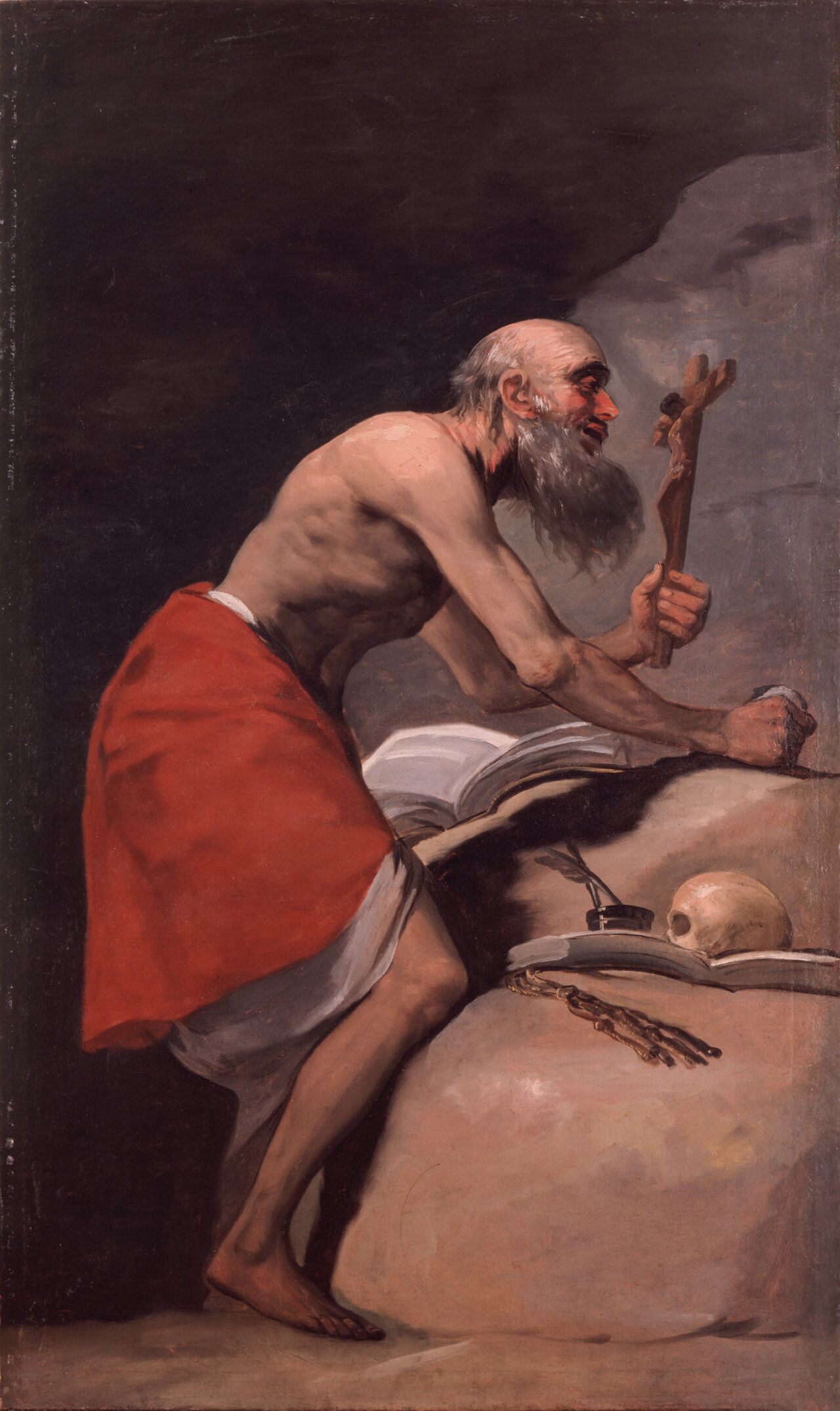
Saint Jerome in Penitence
by Francisco José de Goya y Lucientes, 1798
- Medium
- Oil on canvas
- Dimensions
- 75-1/8 x 45 in (190.8 x 114.3 cm)
- Credits
- The Norton Simon Foundation
- Location
- Norton Simon Museum
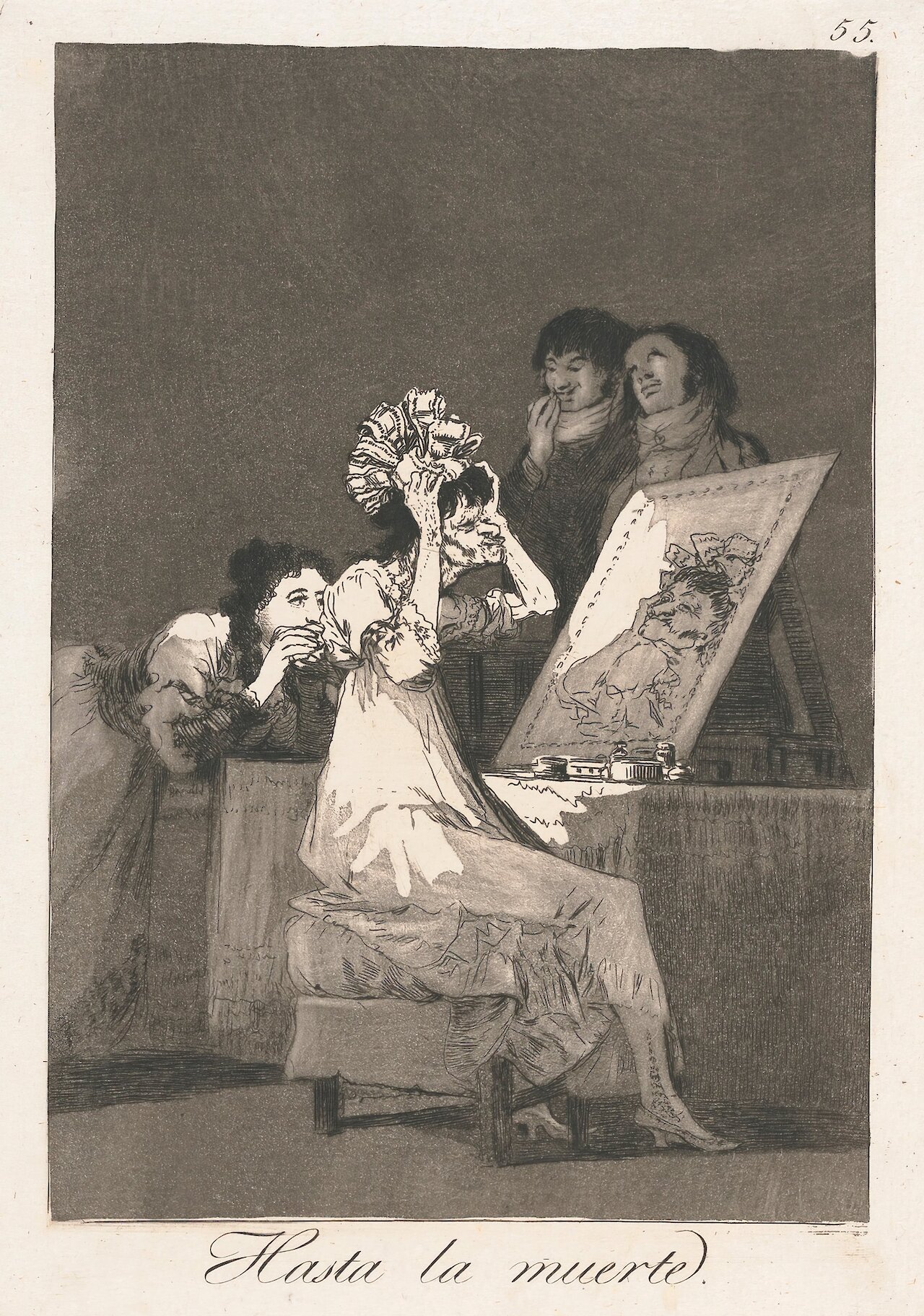
Until Death (Hasta La Muerte) from Los Caprichos
by Francisco José de Goya y Lucientes, 1799
- Medium
- Etching, burnished aquatint, and drypoint
- Dimensions
- 10 3/4 x 7 5/8 in. (27.3 x 19.4 cm)
- Credits
- Ackland Fund
- Notes
Plate 55 from Los Caprichos
- Location
- Ackland Art Museum
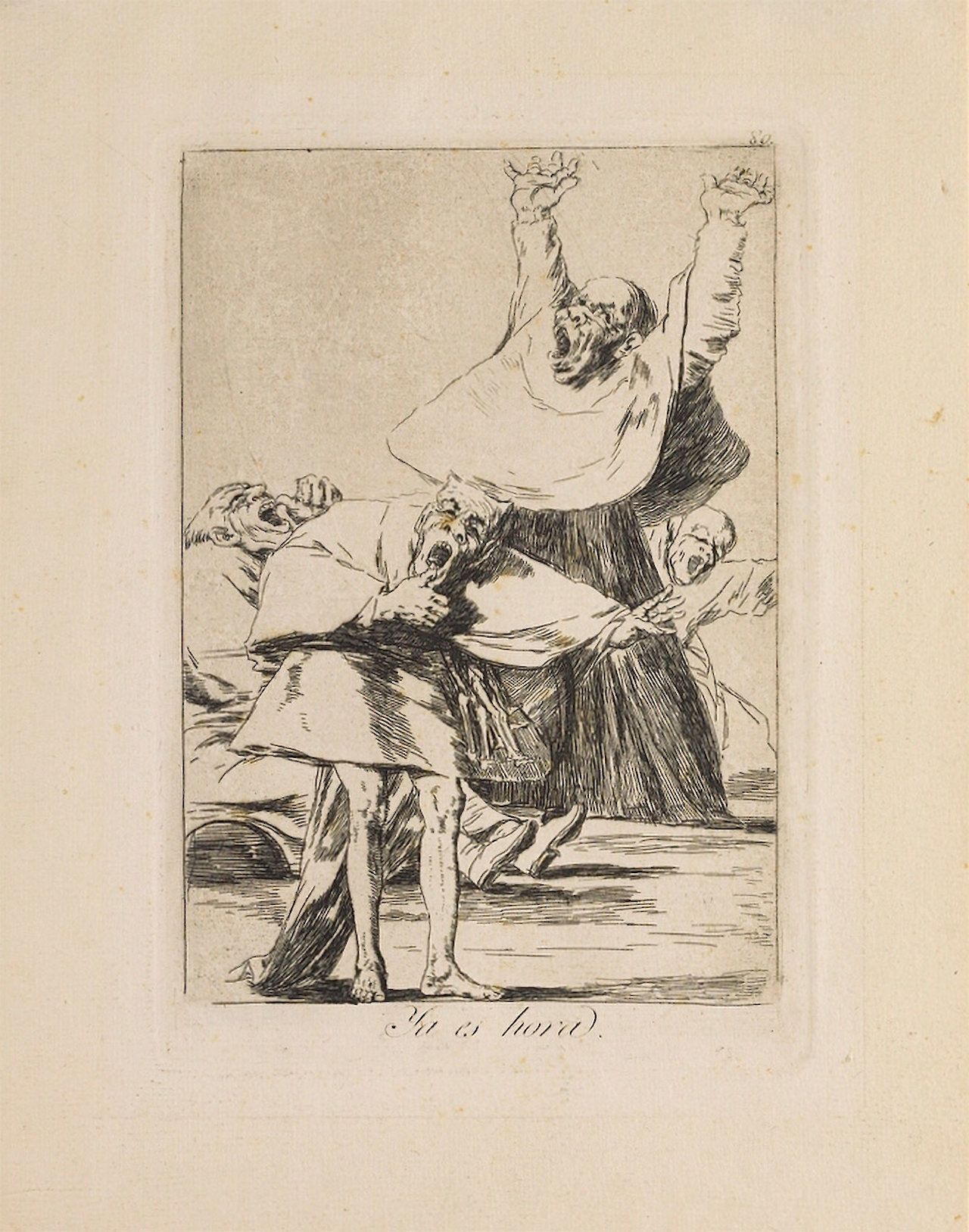
Ya es Hora (‘tis the hour, time to be off) from Los Caprichos
by Francisco José de Goya y Lucientes, 1799
- Medium
- Etching and aquatint
- Dimensions
- Image: 7 3/4 x 5 3/8 in (19.685 x 13.6525 cm); Sheet: 11 1/2 x 8 7/8 in (29.21 x 22.5425 cm)
- Location
- Allentown Art Museum
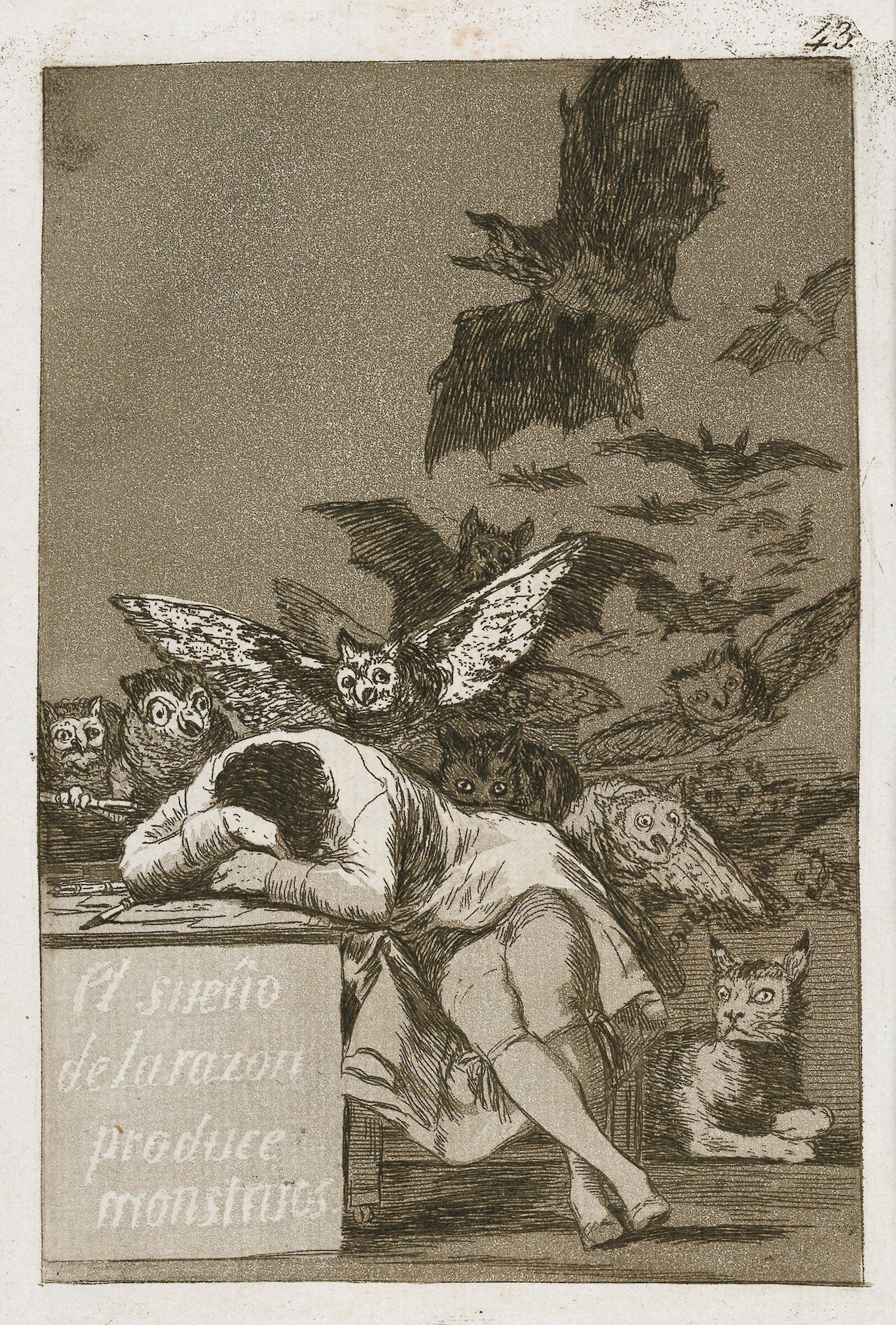
The Sleep of Reason Produces Monsters from Los Caprichos
by Francisco José de Goya y Lucientes, 1799
- Medium
- Etching and aquatint
- Dimensions
- Plate: 21.3 x 15.2 cm (8 3/8 x 6 in.); sheet: 30.8 x 20.5 cm (12 1/8 x 8 1/16 in); platemark: 21.9 x 15.2 cm (8 5/8 x 6 in)
- Credits
- Harvard Art Museums/Fogg Museum, Gift of Philip Hofer
- Location
- Harvard Art Museums
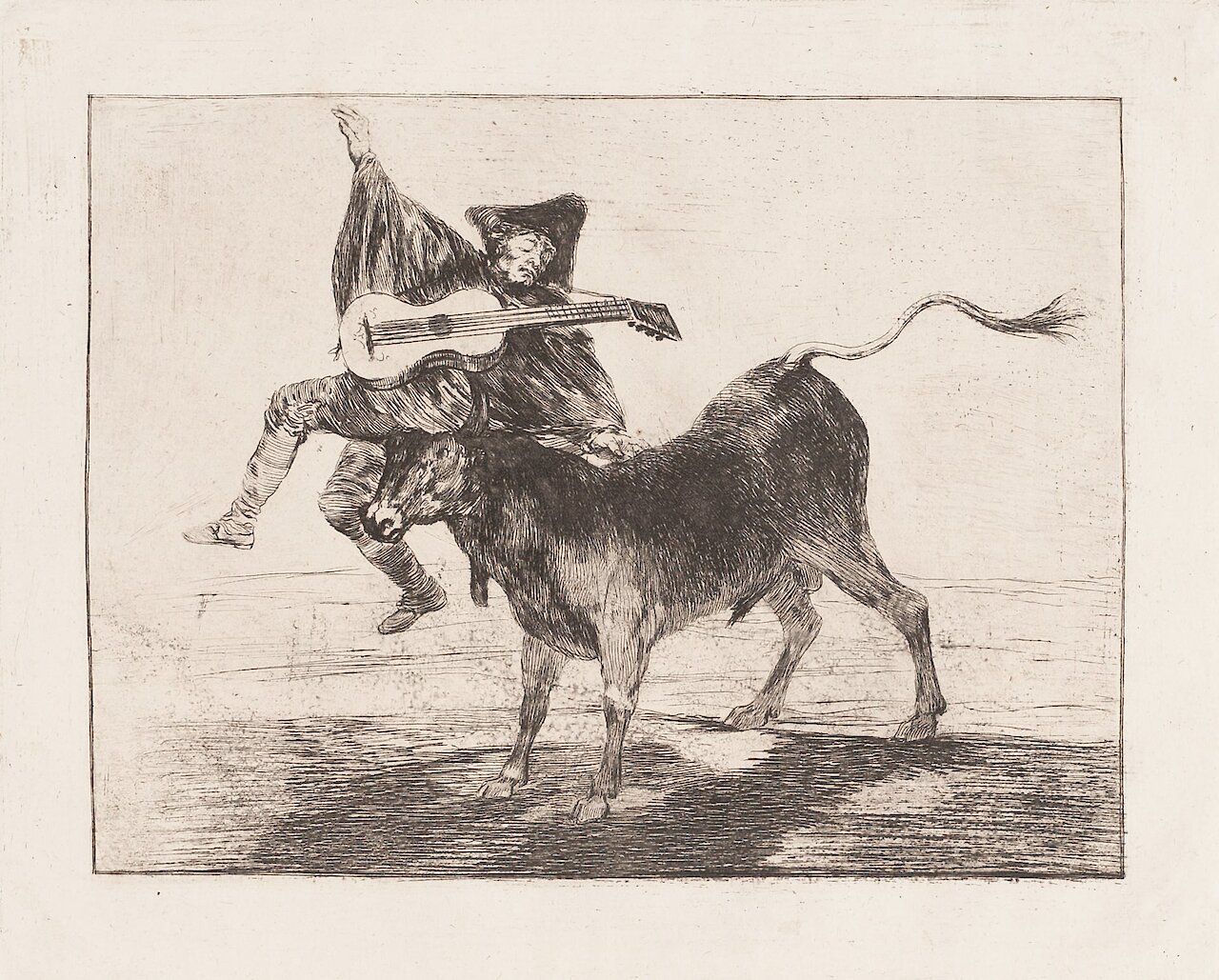
The Blind Man Tossed on the Horns of a Bull (Aveugle enlevé sur les cornes d'un Taureau)
by Francisco José de Goya y Lucientes, circa 1800–1804
- Medium
- Etching, burnished aquatint, and drypoint. Working trial proof
- Dimensions
- Platemark: 6 7/8 x 8 1/2 in. (17.5 x 21.6 cm). On sheet: 8 3/8 x 10 1/16 in. (21.3 x 25.6 cm)
- Credits
- Cincinnati Art Museum. Bequest of Herbert Greer French.
- Location
- Cincinnati Art Museum

Mucho hay que chupar from Los Caprichos
by Francisco José de Goya y Lucientes, 1803
- Medium
- Etching and aquatint
- Dimensions
- 12 1/2 x 8 7/16 in.
- Credits
- Eli and Edythe Broad Art Museum, Transfer from the Department of Art, Michigan State University
- Location
- MSU Broad Art Museum
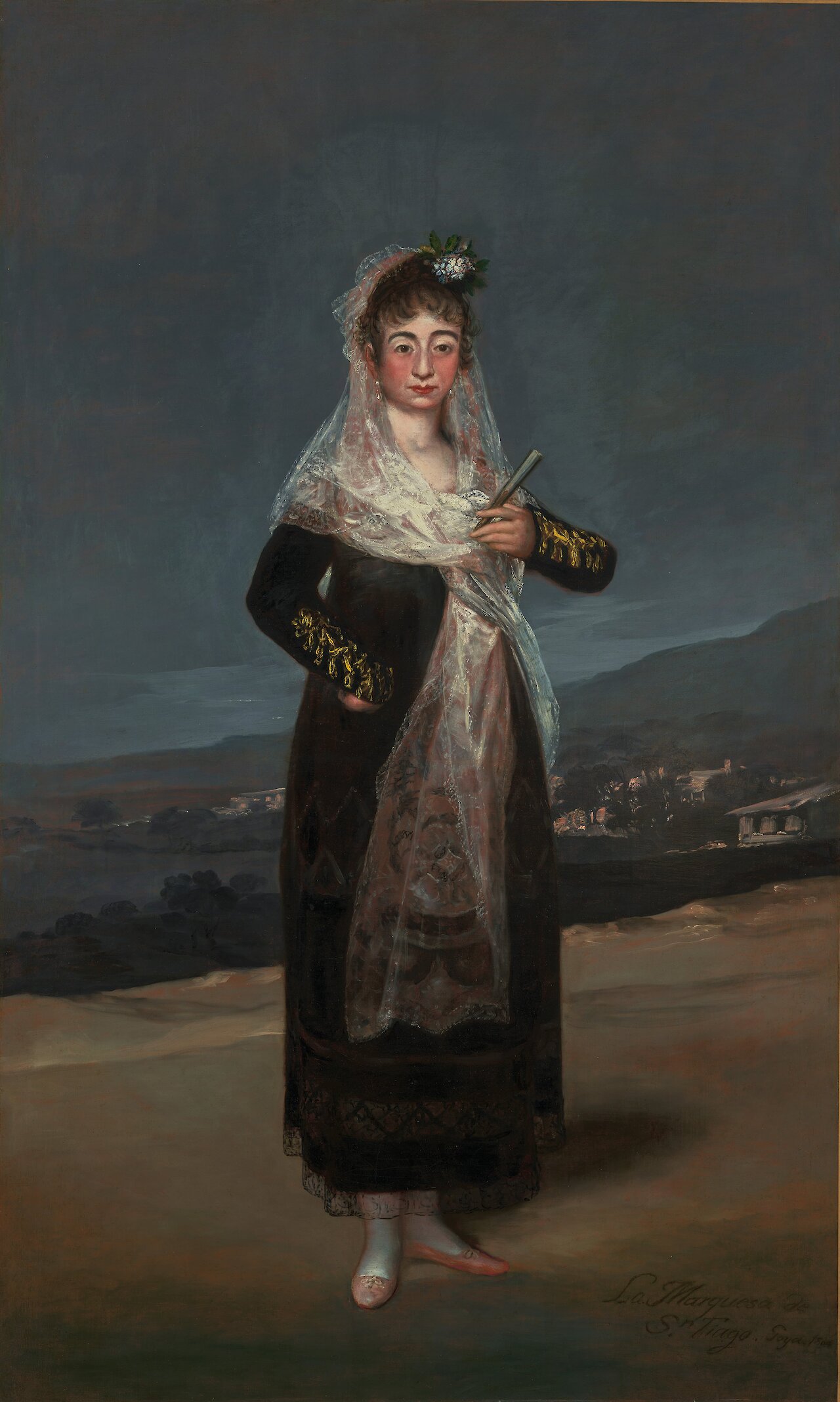
Portrait of the Marquesa de Santiago
by Francisco José de Goya y Lucientes, 1804
- Medium
- Oil on canvas
- Dimensions
- Unframed: 209.9 × 126.7 cm (82 5/8 × 49 7/8 in.) Framed: 235.3 × 150.2 × 9.5 cm (92 5/8 × 59 1/8 × 3 3/4 in)
- Notes
The Marquesa de Santiago strikes a commanding presence, confronting the viewer directly with her hand assertively on her hip. She stands in front of a landscape of gently sloping hills dotted with cottages made up of rough, tan brushstrokes. Her sheer white lace mantilla veil extends to her knees and she holds a closed fan in her left hand, both traditional accessories of Spanish women in the 1700s and 1800s. The Marquesa was known to wear bold makeup, enough that her acquaintances wrote about it, and here, heavily applied rouge, powder, and lipstick accentuate her features. While other portraitists of this time often flattered or idealized their sitters, Francisco Goya frankly captured the Marquesa’s appearance and confident personality.
The Marquesa, María de la Soledad Rodríguez de los Ríos Tauche, grew up the only child of a well-connected family in Madrid, eventually inheriting the three noble titles of her parents and the wealth that came with those. Married first in 1783 when she was eighteen, then again in 1790 after she was widowed, María was the one who brought greater wealth and status to her husbands. She had estates in Flanders and Spain, two million reales in capital (the Spanish currency used from the 1300s to 1860s), and two million more in silver, jewelry, and other possessions. This portrait, though painted as a pair to her second husband’s, unconventionally touts her own title, Santiago, in the inscription in the lower right, rather than his, San Adrían, which would have been typical for her to adopt as his wife. As the more elite of the couple, she may have decided to commission these portraits from Goya to add to her family’s substantial paintings collection.
- Location
- J. Paul Getty Museum